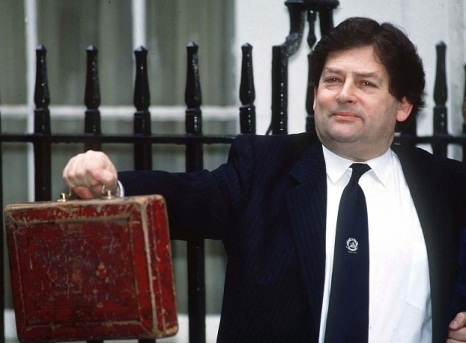The Bank of England’s Revealing Views On Gold in 1988
Below is an interesting 1988 discussion paper on gold, written by Bank of England staff. The original paper can be found in pdf here. The United Kingdom’s gold reserves belong to HM Treasury (HMT) and are held in the Exchange Equalisation Account (EEA), but managed by the Bank of England on behalf of HMT. The discussion paper is presented with no comment. The introductory context for the paper and the tables and appendices referred to in the paper can be found in the original link as part of the supporting documentation. Discussion paper begins below. Hopefully it improves readability since pdfs are quite awkward to read and, in this case, the pdf text was quite squashed.
THE EXCHANGE EQUALISATION ACCOUNT’S HOLDINGS OF GOLD
- The EEA’s holdings of gold, including the gold swapped for ECU’s with the EMCF, amounts to 23.8 mn ozs, or some 740 tons. Since the substantial reduction in stocks in the late 1960’s and early 1970’s resulting from the then balance of payments’ crises, there has been no significant change in holdings. At the annual revaluation of the reserves in March 1988, the gold holdings were worth $8.1 bn. However as a share of total reserves they have fallen significantly from 31 per cent in 1980 to 17 per cent of total spot reserves now. Table 1 shows the change.
- Table 2 compares UK official gold holdings since 1969 with those of other industrialised countries and, with Chart 1, shows that, Japan apart, UK holdings are low both in absolute terms and as a proportion of total reserves. As with the UK, there has been little movement in the level of gold holdings by most other countries in recent years.
- There are three principal reasons why countries wish to retain an element of gold in their reserves:
(a) as the ultimate store of value, the “war chest" argument;
(b) as an alternative investment to holdings of currencies and other reserve assets;
(c) as an insurance against gold resuming a central role in the international monetary system.
(a) The “war chest" argument
- For thousands of years gold has been, in times of war and crisis, the ultimate store of value and medium of exchange. Gold is virtually indestructible, anonymous, mobile and almost universally acceptable. In times of crisis and uncertainty the presence of a sizeable gold holding boosts confidence of creditors, not least because gold is the highest quality asset: unlike foreign currencies, it is not a claim on a debtor (bank or government) and therefore does not have the same risk of default in times of crisis. The war chest argument is still a cogent one but it does not, of course, tell you what size of gold holdings are necessary insurance against catastrophe.
(b) Gold as an investment
- The return on gold is measured by the increase in its value over time. This can be compared with the return on alternative financial assets over the same period. Table 3 compares the return on our gold holdings to the return we would have used from holding US Treasury Bills. However, even more than with other financial assets, the profitability of holding gold depends critically upon the time period examined: purchases before 1980 would have been a good investment, purchases subsequently a poor investment because the price peaked in 1980, and since, real interest rates have been positive and global inflation receding.
- Table 4 gives average annual rates of return over various time periods when in each case the closing date is 1987 when the average gold price was $487. It uses various starting dates. Those to which greatest weight should be given are probably 1973, since that was the beginning of the period when there was a free market for gold (the unofficial price had been free since 1968, but was probably still constrained by the fixed official price until the period of floating exchange rates began); and 1914, since that was the end of the pre-war period when there were no significant restrictions on gold-holding or prices (of course the nominal price of gold was fixed in most currencies, but since under the gold standard the price level was influenced by the supply of and demand for gold, one can argue that the real price of gold was not constrained in the long-term). For any starting date between 1914 and 1973 the return on gold measured to any date after 1973 is shifted upwards by the effect of the freeing of gold from the fixed nominal official price of $20.67 per ounce until 1934 and $35 per ounce until 1971.
- There is a case for extending the starting date backwards to 1879 (when the US adopted the gold standard), but this would include the period of the South African gold discoveries, a geological discovery which is unlikely to be duplicated. Moreover, since the return on gold is being compared to the return on US financial instruments, it may be appropriate to omit the period before 1914, when the US, as a developing, capital-importing country had real interest rates generally above those in London, in contradistinction to the period after the first World War.
- Of course, it should also be noted that the past is not necessarily a good guide to the future.
- In addition to measuring the average return over different period, it is also important to consider the extent to which the return from gold has fluctuated differently from the return on other assets. Since that may reduce the overall risk of our reserves portfolio if its rate of return is not perfectly correlated with that on the other assets in the portfolio. Whether gold serves such a purpose depends both upon:
(i) how great the variability of its return is relative to that on alternative assets;
(ii) how much less than perfectly correlated is its rate of return with that on other assets.
In fact the answer will depend upon the accounting currency that we are interested in. Assets which reduce risk valued in one currency may not do so when valued in a different currency or basket of currencies.
10. Nevertheless, Annex A shows that over the past 20 years either in dollars or SDR terms, gold has had little or no role to play in reducing risk. Its lack of correlation in return with that on other assets has not been sufficient to outweigh its own relatively high variability of return. The conclusion must be, therefore, that the decision to continue holding significant levels of gold in our reserves must be on other grounds.
(c) Gold in the international monetary system
11. After the collapse of the Bretton Woods system and the abolition of the fixed parities between domestic currencies and gold, the international monetary community decided in principle to remove gold from the international monetary system. Until late 1978 central banks understood not to add to their gold stocks, and the IMF and the USA reduced their gold holdings through auction.
12. However, the move to eliminate gold never gathered much momentum, and has now petered out. The European Monetary System (EMS) has given gold something of a new role in international monetary affairs. Gold deposited with the EMCF can be used to obtain currency through the ECU mobilisation process or (were we in the exchange rate mechanism (ERM) through the use of official ECUs themselves). However, EMS membership (or for that matter, ERM participation) does not constitute an overwhelming ground for maintaining present gold holdings, though ECU mobilisation, within limits, makes gold deposited with the EMCF more liquid.
13. [The mechanism for creating ECUs through the EMCF works on both gold and dollar deposits, so that to the extent that gold was replaced by dollars, the EMCF’s capacity to create ECUs would not be affected. Furthermore, the logic of the system is that an identifiable Community asset is created against the deposit of non-Community reserve assets, namely dollars and gold. There is no reason in logic why EMCF members should not deposit 20 per cent of their reserves in non-Community currencies other than dollars as well, eg. Yen and Swiss Francs, if it is desirable to increase the scale of ECU creation or to compensate for reductions in gold deposits.]
14. Looking forward over the longer term, it is possible that if moves towards more managed rates continue, there will be renewed attempts to restore gold to a more formal role as a reserve asset. It was interesting to note the amount of speculation along these lines in the US last Autumn, following Secretary Baker’s proposal for a commodity indicator (including gold), even though Secretary Baker was at pains to make it clear that he was not advocating a commodity standard. However, the probability of this happening is not sufficiently high to justify the UK retaining its gold stocks on these grounds alone.
15. Gold is therefore left with something more than a residual function. Its possession is likely to increase confidence in the holder’s currency, at least in times of difficulty; and although it is illiquid compared to many financial assets, and expensive to store, in most circumstances it can be used as security for borrowing or to obtain currency through swaps.
The outlook for the gold price
16. Demand and supply in gold are always difficult to measure because of the special nature of the metal. Unlike other commodities, demand for gold does not for the most part lead to “consumption" of the metal; while it may be transmuted into another form it remains as a potential overhang on the market as it can in the right circumstances, such as the price surge in 1980, be re-sold. In addition, the amount of gold coming on to the free market from the communist world in particular is not known, although some estimates are available. Making due allowance for all this, Table 5 attempts to show how supplies of metal coming on to the market in 1985 and 1986 (a period which saw relatively little change in the dollar price) have been absorbed.
17. New gold production has been rising rapidly in recent years. Although production in the main supplier, South Africa, which provides about 50 per cent of total output, has been static, elsewhere it has soared. New technology and the profitability of gold-mining (production costs of $250 per fine ounce against a market price of $439 per fine ounce) have meant that enormous resources have been devoted to the search for gold. Output in Australasia, the USA and Canada in particular has grown rapidly and is expected to continue to do so over the next few years. From 1280 tons in 1986, non-communist output is forecast to rise to 1500 tons in 1990.
18. It is difficult to see where the demand for gold on this scale at the present level of price is going to come from. Investment demand does not seem likely to pick up while inflation remains low and global interest rates remain positive. The increased production in 1986 was only absorbed with little impact on the price by the purchase of some $600 million worth of gold (about 60 tons) by Japan for the Hirohito coin. Without similar large-scale purchases from some source in each of the next few years, pressure on the price must be likely. After 1990, however, increases in supply would, on present forecasts, appear to tail off, while industrial demand in the strong-currency countries, especially Japan, is likely to have increased. In summary, while it is difficult because of supply considerations to be optimistic about the course of gold price over the next few years, thereafter supply and demand may come into better balance.
The transparency of operations in gold
19. The level of the major countries’ gold holdings is readily available, being published each month with a short time lag in IFS, and is potentially the focus of considerable media interest. As stated in paragraph 2 and demonstrated in Table 2, the level of G7 countries’ holdings has altered hardly at all in recent years and the sale or purchase of gold on anything other than a small-scale would rapidly become public and would carry considerable implications for the price. Any move to reduce our present holding would therefore require careful handling if market disruption was to be avoided. Given the present relatively high level of currency reserves, it would be difficult to claim that sales were being made from necessity and thus it would be clear that the action represented a judgement on the future level of the gold price. While this might prove correct in the short-term, it might not do so over a longer period with consequent undesirable publicity. The international consequences also might be unsatisfactory as such action by the UK might have the effect of reopening the debate about the future of gold and freeing other G7 countries from the self-imposed restraint they clearly feel in relation to their holdings.
20. Given the present state of demand and supply mentioned above, any move to increase our present holdings might not have too much impact on the market as a whole. It would, however, run the risk of proving to be an unwise investment and give, on the one hand, comfort to South Africa and the Soviet Union but on the other, as a comment upon the dollar, possibly great offence to the US.
Earnings on gold
21. There are ways in which the EEA can realise a small return on gold, without changing significantly the overall level of stocks, which we do already exploit. Despite the launch of the Britannia the Bank continues to see a small but steady demand for the half sovereign and, to a much smaller degree, the sovereign. These coins are sold at a premium (15 per cent in the case of the half sovereign, 2½ per cent for the sovereign) over their gold content giving rise to modest but useful profits to the EEA. Secondly, within agreed limits, the Bank has also increased its gold lending operations leading to earnings of some £½ million from these activities over the last two years. There may be scope for some further modest increase in this business in the future which will be discussed between the Bank and HMT.
Conclusions
21. (a) the UK’s gold holdings are modest both absolutely and proportionately, as compared with other G7 countries and in relation to the recent past;
(b) gold still has a role as a strategic store of value; as an investment its relative performance depends greatly upon the period over which that performance is measured. It has a small role in our portfolio by helping to diversify risk;
(c) gold holdings also form part of our contribution to the EMCF swap;
(d) demand and supply considerations make us bearish about the price prospects in the short-term although not necessarily in the medium term but in practice there are significant international constraints on our scope for manoeuvre.
Recommendations
23. (a) the EEA’s gold holdings should be retained for the time being, at approximately their present level;
(b) consistent with prudential considerations, we should seek to exploit whatever opportunities there are for earning a return on our gold holdings;
(c) these recommendations should be reviewed at official level if the price of gold moves (up or down) by, say, $100 an ounce from its present level and in the light of developments in the operation of the EMS.
Popular Blog Posts by Ronan Manly
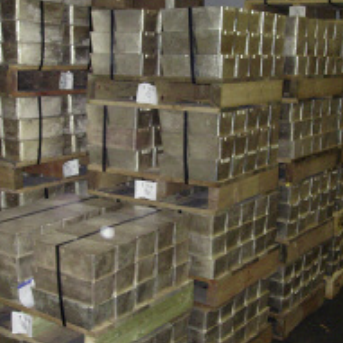 How Many Silver Bars Are in the LBMA's London Vaults?
How Many Silver Bars Are in the LBMA's London Vaults?
 ECB Gold Stored in 5 Locations, Won't Disclose Gold Bar List
ECB Gold Stored in 5 Locations, Won't Disclose Gold Bar List
 German Government Escalates War On Gold
German Government Escalates War On Gold
 Polish Central Bank Airlifts 8,000 Gold Bars From London
Polish Central Bank Airlifts 8,000 Gold Bars From London
 Quantum Leap as ABN AMRO Questions Gold Price Discovery
Quantum Leap as ABN AMRO Questions Gold Price Discovery
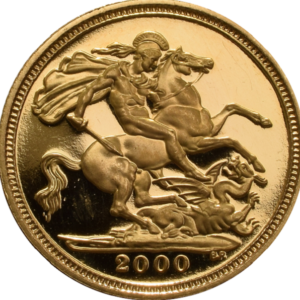 How Militaries Use Gold Coins as Emergency Money
How Militaries Use Gold Coins as Emergency Money
 JP Morgan's Nowak Charged With Rigging Precious Metals
JP Morgan's Nowak Charged With Rigging Precious Metals
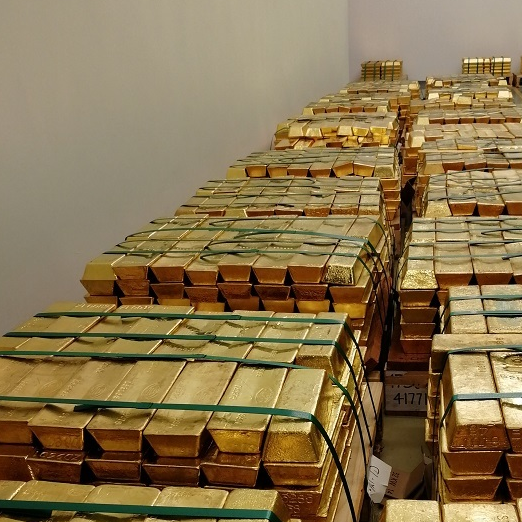 Hungary Announces 10-Fold Jump in Gold Reserves
Hungary Announces 10-Fold Jump in Gold Reserves
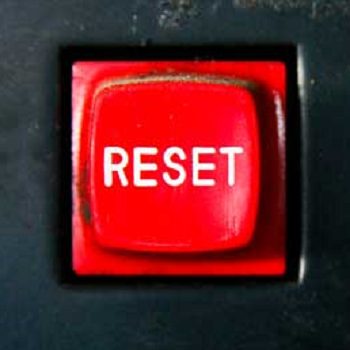 Planned in Advance by Central Banks: a 2020 System Reset
Planned in Advance by Central Banks: a 2020 System Reset
 Surging Silver Demand to Intensify Structural Deficit
Surging Silver Demand to Intensify Structural Deficit





 Ronan Manly
Ronan Manly 2 Comments
2 Comments